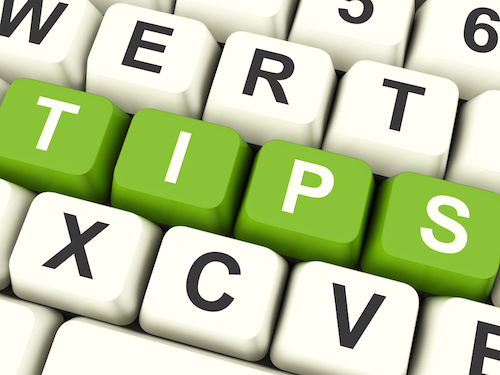It’s no great secret that one of the elements that makes WordPress so incredibly popular is the fact that it thrives on a sense of community. Indeed, message boards teem with useful information that WordPress users, designers and administrators at every level of knowledge and skill share and disseminate.

Of course, given that the platform itself is based on open source code, it would absolutely make sense that some of the best tips, trips, hacks and tools come not necessarily from those people that actually built WordPress but rather from the burgeoning community that supports, rates, reviews and troubleshoots every plugin and program, every widget and theme, every update and security issue.
That said, the folks at WP Beginner have compiled an impressive list of creative shortcuts and work-arounds that can really up a user’s game and make the process of designing, launching and administering a WordPress site infinitely more seamless and easy. Here’s part one with seven tips and tricks, stand by for part 2 next week.
- Lots of WordPress users aren’t aware that, by default, the program shows your latest posts and added content on the homepage of your site. However, you can actually designate any page as your homepage. First create a new page and name it “home.” Then create a second page and call it something like “blog.” Now go to “Settings, Reading” in your admin area and switch to “A static page” under the “Front page displays” option. Then select the pages you just created as your “home” and “blog” pages.
- Although the admin area of your WordPress site is already password protected, it wouldn’t hurt to add an extra layer of security and make it even more difficult for hackers to gain access to your site. Log in to the “cPanel” of your dashboard and, under the security tab, click on “Password Protect Directories.” Now select the directories you want protected, in this case the wp-admin folder, and create a username and password. Now when you try to access your admin directory you should see a new authentication required box.
- For those users who like to put images on their site, a bit of frustration often ensues as, by default, multiple images appear right next to each other when added at the same time. This looks unattractive and requires people to scroll around to see them all. To alleviate this problem you can display thumbnails in a grid layout that improves the user experience. First create a new post or edit an existing post where you want your images displayed. On the post edit screen click on “Add Media” and launch the uploader popup. Upload all the photos you want to display, click on “create gallery” and then “Create a new gallery.” Gallery settings options will appear and you can select the number of columns, what each image should like, what size they should be etc. Then click on the insert gallery button and you’re all set.
- Someone trying to access your WordPress site can make as many attempts as they want at guessing your user name and password. To stop this, install and activate the Login LockDown plugin. It allows you to set a limit on the number of failed attempts a user can make before they’re locked out of the system completely.
- CSS or Cascading Style Sheets are wonderful for working on a document written in a markup language, but what if you don’t know anything about CSS? Use the Inspect Element Tool to customize your site and have the ability to edit HTML or JavaScript for any webpage while viewing your changes in real time. This is great for seeing how a site design will look before going live, and you can do it by simply pointing and clicking on any element on a page and then selecting “Inspect” from your browser menu. Your window will split and you’ll see all your source codes, and any changes you may make will instantly render on the page above. After you’re happy with your edits you can go ahead and change the actual theme files as well as any custom CSS code you added.
- Facebook aficionados will love that the social media site can automatically detect an image from your articles when they’re shared, but sometimes it doesn’t pick the right image. Using the Yoast SEO plugin select a Facebook thumbnail image in the metabox on the post edit screen or by visiting the “SEO, Social” page and click on the image there. Now you know that the image Facebook picks up and displays is the one you want and not something inappropriate.
- Lastly, WordPress falters when it comes to uploading and displaying images in your sidebar area. As of now, you need to add a special HTML code in order to do it, but it’s pretty easy. First upload the image to your site using the media uploader and make a copy of its URL. Then go to “Appearance, Widgets” and add a text widget to your sidebar. Inside the widget add the HTML code “<img src=”Paste image URL here” alt=”Alternate text” />” Now save the widget settings and preview your site before making the change permanent.


